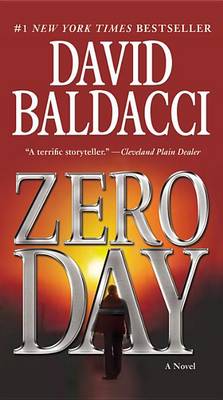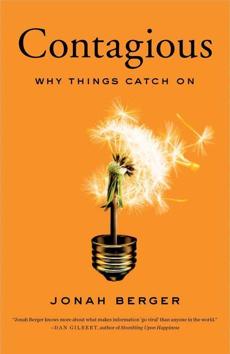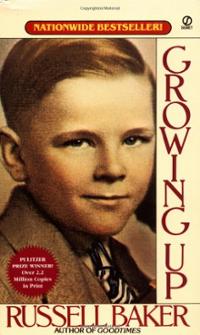
Welcome to the “white-water world”—a world that is rapidly changing, hyper-connected and radically contingent on forces beyond our control.
The social environment where we live and work today:
– makes a fool out of the concept of mastery in all areas except our ability–or inability–to navigate these turbulent waters successfully (the so-called “caring” professions may be the only exception);
– requires that we work in more playful and less pre-determined ways in an effort to to keep up with the pace of change and harness it for a good purpose;
– demands workplaces where the process of learning allows the tinkerer in all of us “to feel safe” from getting it wrong until we begin to get it right;
– calls on us to treat technology as a toolbox for serving human needs as opposed to the needs of states and corporations alone; and finally,
– this world requires us to set aside time for reflection “outside of the flux” so that we can consider the right and wrong of where we’re headed, commit to what we value, and return to declare those values in the rough and tumble of our work tomorrow.
You’ve heard each of these arguments here before. Today, they get updated and expanded in a commencement address that was given last month by John Seely Brown. He was speaking to graduate students receiving degrees that they hope will enable them to drive public policy through innovation. But his comments apply with equal force to every kind of change–small changes as well as big ones–that we’re pursuing in our work today.
When you reach the end, I hope you’ll let me know how Brown’s approach to work relates to the many jobs that are still ahead of you.
Good Work Uses Innovation to Drive Change
John Seely Brown is 78 now. It seems that he’s never stopped trying to make sense out of the impacts that technology has on our world or how we can use these extraordinary tools to make the kind of difference we want to make.
Brown is currently independent co-chairman of the Center for the Edge, an incubator of ideas that’s associated with the global consulting firm Deloitte. In a previous life, he was the chief scientist at Xerox and the director of its Palo Alto Research Center (or PARC). Brown speaks, writes and teaches to provoke people to ask the right questions. He stimulates our curiosity by defining the world in simple, practical terms that are easy to understand but more difficult to confront. As a result, he also wants to share his excitement and optimism so that our own questioning yields solutions that make the most out of these challenges and opportunities.
He begins his commencement address with quotes from two books that frame the challenge as he sees it.
KNOWLEDGE IS TOO BIG TO KNOW
We used to know how to know. We got our answers from books or experts. We’d nail down the facts and move on. We even had canons . . . But in the Internet age, knowledge has moved onto networks. There’s more knowledge than ever, but it’s different. Topics have no boundaries, and nobody agrees on anything. (from “Too Big To Know” by David Weinberger)
A WEB OF CONNECTIONS CHANGES EVERYTHING
The seventh sense is the ability to look at any object and see (or imagine) the way in which it is changed by connection–whether you are commanding an army, running a Fortune 500 company, planning a great work of art, or thinking about your child’s education. (from “The Seventh Sense” by Joshua Cooper Remo)
These realities about knowledge and connection impact not only how we think (research, practice, and create) but also how we feel (love, hate, trust and fear). Brown analogizes the challenge to navigating “a white water world” that requires particular kinds of virtuosity. That virtuosity includes:
– reading the currents and disturbances around you;
– interpreting the flows for what they reveal about what lies beneath the surface; and
– leveraging the currents, disturbances and flows for amplified action.
In short, you need to gain the experience, reflexes and opportunism of a white-water rafter to make the most out of your work today.
Becoming Entrepreneurial Learners
To confront the world like a white-water rafter, Brown argues—in a kind of call to arms—that each graduate (and by implication, each one of us too) needs to be a person whose work:
Is always questing, connecting, probing.
Is deeply curious and listening to others.
Is always learning with and from others.
Is reading context as much as reading content.
Is continuously learning from interacting with the world, almost as if in conversation with the world.
And finally, is willing to reflect on performance, alone and with the help of others.
No one is on this journey alone or only accompanied by the limited number of co-workers she sees everyday.

Years before giving this commencement address, Brown used the “one room schoolhouse” in early American education as the springboard for a talk he gave about the type of learning environment we need to meet this “call to arms.” In what he dubbed the One Room Global Schoolhouse, he applied ideas about education from John Dewey and Maria Montessori to the network age. This kind of learning has new characteristics along with some traditional ones.
Learning’s aim both then and now “is making things as well as contexts,” because important information comes from both of them. It is not simply the result (the gadget, service or competence with spelling) that you end up with but also how you got there. He cites blogging as an example, where the blog post is the product but its dissemination creates the context for a conversation with readers. Similarly, in a one-room schoolhouse, a student may achieve his goal but only does so because everyone else who’s with him in the room has helped him. (I’ve been taking this to heart by adapting each week’s newsletter into a blog post so that you can share your comments each week with one another instead of just with me if you want to.)
On the other hand, learning in a localized space that’s open to global connections and boundless knowledge means that it’s better to “play with something until it just falls into place.” It’s not merely the problem you’re trying to solve or the change you’re trying to make but also creating an environment where discovery becomes possible given the volume of inputs and information. This kind of work isn’t arm’s length, but immersive. (I think of finger-painting instead of using a brush.) It allows you to put seemingly unrelated ideas, components or strategies together because it’s fun to do so and–almost incidentally–gives rise to possibilities that you simply didn’t see before. In Global Schoolhouses, “tinkering is catalytic.”
Because “time is money” in the working world, one of the challenges is for leaders, managers, coordinators, and teachers to provide “a space of safety and permission” where you can make playful mistakes until you get it right. Because knowledge is so vast and our connections to others so extensive, linear and circumscribed forms of learning simply can’t harness the tools at our disposal to make the world a better place.
Some of the learning we need must be (for lack of a better word) intergenerational too. Brown is inspired by the one room schoolhouse where the younger kids and the older kids teach one another and where the teacher acts as coach, coordinator and mentor once she’s set the table. In today’s workplace, Brown’s vision gets us imagining less hierarchical orgnizations, workers plotting the directions they’ll follow instead of following a manager’s directions, and constantly seeking input from all of the work’s stakeholders, including owners, suppliers, customers and members of the community where the work is being done. The conversation needs to be between the youngest and the oldest too. For the magic to happen in the learning space where you work, that space should be as open as possible to the knowledge and connections that are outside of it.
In his commencement address, Brown refers to Sherlock Holmes when describing the kind of reasoning that can be developed in learning collaborations like this.
[W]here Holmes breaks new ground is insisting that the facts are never really all there and so, one must engage in abductive reasoning as well. One must ask not only what do I see but what am I not seeing and why? Abduction requires imagination! Not the ‘creative arts’ kind but the kind associated with empathy. What questions would one ask if they imagined themselves in the shoes, or situation of another.
Here’s a video from Brown’s talk on the “Global One Room Schoolhouse.” It is a graphic presentation that covers many of the points above. While I found the word streams snaking across the screen more distracting than illuminating, it is well worth the 10 minutes it will take for you to listen to it.
There’s Cause for White-Water Optimism

We’re worrying about our work for lots of reasons today. Recent news reports have included these troubling stories:
– the gains in gross national product (or wealth) that were reported this week are not being shared with most American workers, which means the costs and benefits of work are increasingly skewed in favor of the few over the many;
– entire categories of work—particularly in mid-level and lower paying jobs—will be eliminated by technologies like advanced robotics and artificial intelligence over the next decade; and
– the many ways that we’re failing to consider the human impacts of technologies because of the blinding pace of innovation and the rush to monetize new products before we understand the consequences around their use—stories about cell phone and social media addictions, for example.
Brown’s attempt to produce more white-water rafters who can address these kinds of challenges is part of the solution he proposes. Another part is to balance our legitimate concerns about the changes we’re experiencing with optimism and excitement about the possibilities as he sees them.
Brown closes his commencement address with a story about the exciting possibiities of new technology tools. It’s about how Artificial Intelligence (AI) can become Intelligence Augmentation (or IA). “[I]f we can get this right, he says, ” this could lead to a kind of man/machine virtuosity that actually enhances our humanness rather than the more dystopian view of robots replacing most of us.”
Brown witnessed this shift to “virtuosity” during the now legendary contest that pitted the greatest Go player in the world against AlphaGo, an artificial intelligence program. (Maybe the world’s most complex game, Go has been played in East Asia for more than 2500 years.)
There is a documentary about AlphaGo (trailer here) that I watched last night and that I agree with Brown is “stunning.” It follows at close range the team that developed the AIphaGo program, the first games the program played and lost, and the final match where AlphaGo beat the world champion in 4 out of 5 games. What Brown found most compelling (and shared with his graduates) were the testimonials and comments at the end.
Those who play the game regularly, like Brown apparently does, found the gameplay they witnessed to be “intuitive and surprising,” even “creative.” Passionate players who watched the human/machine interaction throughout felt it expanded the possibilities and parameters of the game, “a different sense of the internal beauty of the game.” For the world champion himself, it was striking how much it improved his Go play after the epic match. Brown was so excited by these reports that he felt the 21stCentury actually began in 2016 when the championship matches took place. In his mind, it marked the date when humans and machines began to “learn with and from each other.”
Of course, Brown’s AlphaGo story is also about the entrepreneurial learning that produced not only an awe-inspiring product but also a context where literally millions had input in the lessons that were being learned along the way.
+ + +
The past year’s worth of newsletter stories have considered many of the observations that Brown makes above. If you’re interested, there are links to all published newsletters on the Subscribe Page. Here’s a partial list of topics that relate to today’s discussion:
– how technology influences the future of our work (9/13/17-why “small” inventions like barbed wire, modern paper and the sensors in our phones can be more influential than “big” ones like the smart phone itself; 10/1/17-how blockchain could monetize every job, big and small, where you have something of value that others want);
– how openness to “the new and unexplored” is key to survival in work and in life (8/20/17–working groups outside your discipline are better at “scaling up” learning in rapidly changing industries; 6/24/18–a genetic marker for extreme explorers has been found among the first settlers of the Western Hemisphere); and
– the value of playful tinkering (7/2/17 -if you really want to learn, focusing less may allow you to see more); 8/27/17–how curiosity without formal preparation can win you a Nobel Prize in physics; and 10/17/17–the one skill you’ll need in the future according to the World Economic Forum is the ability to play creatively).
What John Seely Brown does in his June commencement address is to link these ideas (and others) into a narrative that’s filled with his own excitement and optimism. In my experience, the commencement address season is a particularly good time to find his kind of inspiration.




